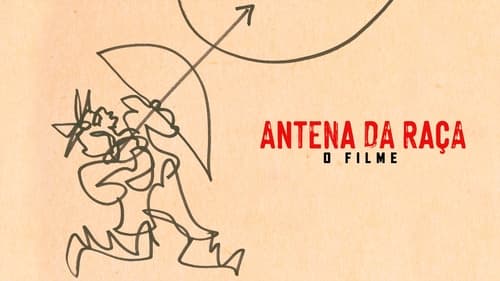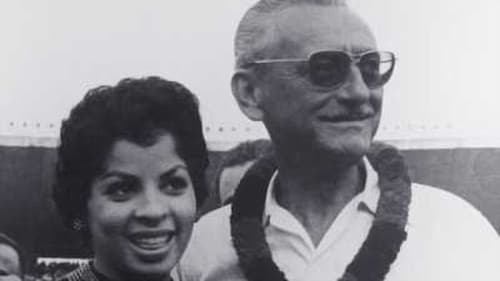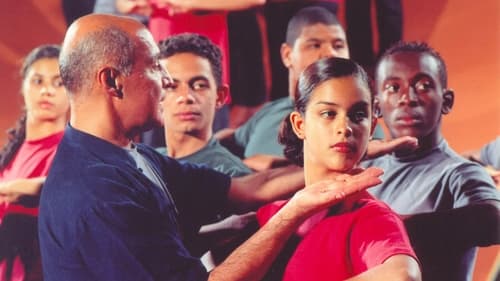
Director of Photography

Cinematography
The trajectory and artistic imagery of actor and director Zbigniew Ziembinski (1908-1978), precursor of modern theater in Latin America and master of generations of Brazilian actors. The polyphonic montage builds on vast unpublished material, covering half a century of performances, teletheaters and interviews by Zimba, as he was known – before and after fleeing Poland, on the eve of the invasion of Warsaw – and recreates fragments of Wedding Dress , a play by Nelson Rodrigues which the Polish-Brazilian director won a revolutionary montage in 1943.

Director of Photography
Thirty-five years after their first meeting, which would change their lives, Argentine guitarist Lucio Yanel and his Brazilian pupil Yamandu Costa reunited to redo, on a trip, the paths that originally led Yanel to the interior of Rio Grande do Sul. Aboard a motor home, with his guitars and memories, master and disciple cross the border of Brazil towards Corrientes, the Argentine's homeland, reflecting on the transformations brought about by the inexorable passage of time.

Director of Photography
We came across traditional rituals of a mixed race of indigenous, black and white people, with their mystic practices, their shamans and healers that express a reality and a way of life that doesn’t belong to any kind of paradigm. This problem is extremely relevant in the current political situation of Brazil in face of the repeated environmental and social catastrophes that are being inflicted upon us.These people have a way of acting which favours a sustainable development, their knowledge should be respected.The world is divided in two categories, independent of any ideology:the rich world and the poor world.We related the religious rituals, the artistic and the mystic trances in a Brazil where poverty and hunger are invisible to a large part of the society. A country of people that has invisible myths and such a rich diversity is being transformed into a unison and melancholic chant. The Guardians Forest whose leader was murdered last Dec, tells us what motivates their fight.

Director
We came across traditional rituals of a mixed race of indigenous, black and white people, with their mystic practices, their shamans and healers that express a reality and a way of life that doesn’t belong to any kind of paradigm. This problem is extremely relevant in the current political situation of Brazil in face of the repeated environmental and social catastrophes that are being inflicted upon us.These people have a way of acting which favours a sustainable development, their knowledge should be respected.The world is divided in two categories, independent of any ideology:the rich world and the poor world.We related the religious rituals, the artistic and the mystic trances in a Brazil where poverty and hunger are invisible to a large part of the society. A country of people that has invisible myths and such a rich diversity is being transformed into a unison and melancholic chant. The Guardians Forest whose leader was murdered last Dec, tells us what motivates their fight.

Sound
The film comes to appropriate and re-discuss the Brazilian reality, based on the dialogues, excerpts and scenes from Glauber Rocha visceral films and his desire to "remove the masks", from ou third world saga. In this scenario where love and violence coexist in a state of inequality and often abandonment.

Director of Photography
The film comes to appropriate and re-discuss the Brazilian reality, based on the dialogues, excerpts and scenes from Glauber Rocha visceral films and his desire to "remove the masks", from ou third world saga. In this scenario where love and violence coexist in a state of inequality and often abandonment.

Screenplay
The film comes to appropriate and re-discuss the Brazilian reality, based on the dialogues, excerpts and scenes from Glauber Rocha visceral films and his desire to "remove the masks", from ou third world saga. In this scenario where love and violence coexist in a state of inequality and often abandonment.

Director
The film comes to appropriate and re-discuss the Brazilian reality, based on the dialogues, excerpts and scenes from Glauber Rocha visceral films and his desire to "remove the masks", from ou third world saga. In this scenario where love and violence coexist in a state of inequality and often abandonment.

Writer
The documentary O Samba é Primo do Jazz will show the musical trajectory of Alcione Dias Nazareth, the great Brazilian interpreter, from her musical references, her insertion in the world of music and her relationship with family and friends. The biopic brings us closer to a relaxed, fun and matriarchal Alcione with her life and artistic work.

Cinematography
The documentary O Samba é Primo do Jazz will show the musical trajectory of Alcione Dias Nazareth, the great Brazilian interpreter, from her musical references, her insertion in the world of music and her relationship with family and friends. The biopic brings us closer to a relaxed, fun and matriarchal Alcione with her life and artistic work.

Director of Photography
Ary Barroso was one of the greatest composers of Brazilian music with his successes for the whole planet. Know its history, reconstructed through Ary's own audio files, interspersed with reports from friends and family.

Cinematography
A film about the universe of Clementina de Jesus, singer revealed at the age of 63 as one of the greatest voices in the history of Samba.

Director of Photography
The film recreates the Roosevelt-Rondon Scientific Expedition (1913-1914), commanded by the Brazilian colonel Cândido Mariano da Silva Rondon and former US president Theodore Roosevelt. Together, they crossed the Pantanal and Amazon Rainforest to explore the mysterious Doubt River.

Director of Photography

Self

Director
Abrindo o Armário dives into the process of liberation and conquests of the gay movement in Brazil. Through interviews, archival images and artistic performances, the film shows how homosexuals from different generations faced resistance, conquered spaces and fought for the right to construct a political, social and collective identity.

Director of Photography
Maria Bethânia takes her poetic narrative to Mozambique for the first time. The interpreter presents excerpts of works connected by different forms of expression in the Portuguese language. With testimonies from Mia Couto, José Agualusa and several Mozambican and Angolan writers and literary critics, the documentary shows the development of literature in these countries, delving on its importance during the anti-colonial resistance, the connection with native languages, the oral traditions and the influence of Brazilian writers.

Director of Photography
The documentary shows the 450 years of the rich history of the city of Rio de Janeiro and its profound transformations, using archive images, 3D simulations and testimonials.

Director of Photography
Fifteen years after their split, a man and woman reconnect during a chance encounter and reconsider their new loves and lives.

Director of Photography
Musical drama that uses popular myths of Brazilian culture to narrate a story full of meetings and misunderstandings, betrayals and loves, crimes and punishments. Against the backdrop of the Pernambuco backlands – its people and its culture, the cordel, the bandits, the cinema and the circus – the film is a universal drama, laden with unique poetry, where reality and the dreamworld mingle.

Director of Photography
“Naked Eye” is a film-documentary of long-length of the artistic and existential universe of the singer Ney Matogrosso, which proposes to recreate through archive’s images in counterpoint with the current production of the artist, thirty-five years of career marked for inventive and transgressing spectacles, always symphonize with its time. Through a coherent boarding with its intransigent trajectory, the film intends to translate the language musical-corporal of Ney Matogrosso, trying audiovisuals resources that express signs evoked poetical politicians and in the repertoire of the singer. A film-song that that looks for to, ultimately, embody the voices of an artist who searches for a nation.

Director of Photography
Serra Pelada's discovery in 1979 precipitated one of the world's largest contemporary gold rushes. In a matter of days miners could make hundreds of thousands of dollars as chunks of gold kilos in weight were found.

Director of Photography
Sixty-six adolescents, residents of Favela da Maré, were selected to participate in a dance show led by the choreographer Ivaldo Bertazzo, which incorporated their own daily experiences. Ten years later, directors David Meyer and Helena Soldberg search for some of the participants of this experience.

Director of Photography
Takes the viewer into a heated contest for a unique prize. In one corner, the undisputed champion: Music; in the other: the musicians. Ricardo, Catherine, Byron, Rodrigo and Rodney - all talented young musicians - vie for a place in a symphony orchestra in Belo Horizonte, São Paulo and Rio de Janeiro. The film reveals the conflict, passion and discipline that the artistic impulse demands.

Director of Photography
Marcos Resende is a cold and crisis man command MetalNobre company. Mark lost his faith in God when her father, Antonio, died in the construction of the Basilica of Our Lady of Aparecida. He had asked the day before to Our Lady Aparecida cleats for him to play in a team and his father would buy them. Mark is separated from wife and Sonia have feuds with son Lucas, in addition to keeping a bad emotional relationship with Beatriz, an official of the company and his mother, Julia. After a misunderstanding, Lucas suffers a serious motorcycle accident. Then Mark revive its history and living with his father. And when he turns to Julia, she reveals the mysterious grace of his family.

Director of Photography
Three young Brazilian try to help a terminally ill woman who lives in the slums of Rio de Janeiro. Their youthful idealism is shattered with the cruel reality of police brutality.

Director of Photography
The reunion of a couple and their recollections of a broken love.

Director of Photography
While filming a TV special about dolphins in Mexico, Eliana meets a biologist who warns her of an ecological danger, since the greedy Esquivel has stolen a crystal skull from the deep waters of the ocean. That's the start of a great adventure and a romance with the dolphin trainer.

Director of Photography

Director of Photography

Director of Photography
On Alberto's birthday, his daughter Zezé gets engaged. But the party turns sour when he decides to expose his pain and regrets.

Director of Photography
Memories of a parrot who participated in the filming of the classic Vidas Secas, in 1962, where it was featured along the puppy Baleia.

Director of Photography
This is a journey of friendship, an Argentinian is going to rediscover his continent while searching for his friend from Bahia. And while the work, the records and the career of this great lady of Brazilian music are well known, the starting point, the training, the first years remained till now in a vaguely legendary and imprecise blur. Thanks to many investigations that concern as many places as times, thanks to journeys back in time through the towns and regions, the film seeks the origins of Maria Bethânia’s voice and style. Helped and led by Bethânia herself, with the assistance of Caetano Veloso and Chico Buarque, the two princes of Brazilian music, along with the complicity of the great Gilberto Gil, the author is allowed to go to the first context : the North-East. In the family home in Santo Amaro, the film finally touches the childhood of Maria Bethânia – and her brother Caetano, and this mysterious point – from which the music radiates.

Camera Operator

Director of Photography
Based on a story by the same name by Caio Fernando Abreu, it tells the encounter of a young man and a sergeant in the 1970s.

Camera Operator



























